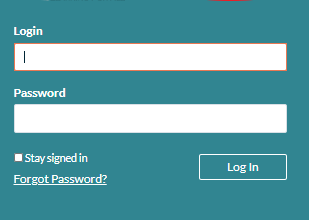
As businesses continue to adopt digital solutions, the need for strong cybersecurity and compliance practices has become crucial. In industries handling sensitive data, maintaining compliance with standards like SOC 2, ISO 27001, and HIPAA isn’t just a regulatory obligation—it’s a key component of building customer trust. Meeting these standards can be challenging, but penetration testing offers a proactive way to strengthen security and prove compliance.
Why Compliance Matters?
For many businesses, compliance isn’t just about avoiding fines or legal issues—it’s about safeguarding valuable data and building credibility. A security breach can damage a company’s reputation, impact customer relationships, and result in costly penalties. Compliance with standards like SOC 2, ISO 27001, and HIPAA reassures clients, partners, and regulators that sensitive information is being handled securely.
The Role of Penetration Testing in Compliance
Penetration testing, often called ethical hacking, is a proactive approach to finding vulnerabilities in systems, applications, and networks. Unlike traditional vulnerability assessments, which simply identify security gaps, penetration testing simulates real-world cyberattacks. This hands-on method provides in-depth insights into how an attacker could exploit weaknesses and the potential impact of a breach.
1. Identifying Vulnerabilities Before Hackers Do
Regular penetration testing helps organizations stay ahead of cybercriminals by identifying vulnerabilities before they can be exploited. This proactive approach ensures that security flaws are addressed before they become entry points for attackers.
2. Proving Compliance with Regulatory Standards
Penetration testing is often a requirement for meeting industry standards and regulations:
- SOC 2: Validates security, availability, and confidentiality controls to protect customer data.
- ISO 27001: Requires businesses to identify risks and validate security measures. Penetration testing ensures controls are effective.
- HIPAA: Demands that healthcare organizations safeguard patient information. Regular testing proves compliance with data protection requirements.
3. Enhancing Compliance Automation
For companies using compliance automation platforms, integrating penetration testing can add an extra layer of security. Automated tools streamline audits and evidence collection, while penetration testing provides proof that security controls work effectively. Combining both methods strengthens your overall compliance strategy.
Best Practices for Effective Penetration Testing1. Define Clear Objectives
Before conducting a test, it’s important to outline specific goals. Are you focused on meeting compliance requirements, uncovering vulnerabilities, or stress-testing your security measures?
2. Engage Certified Experts
Partnering with professionals who hold certifications like OSCP, CEH, or CISSP ensures you receive thorough, accurate, and actionable insights. Experts can simulate sophisticated attacks that reflect current threat landscapes.
3. Prioritize and Remediate Vulnerabilities
Testing is only effective if you act on the findings. Use the test report to prioritize vulnerabilities based on severity and address them promptly. This step is essential for compliance and security.
4. Test Regularly
Regular penetration tests are crucial, especially after significant system changes or when new threats emerge. Consistent testing keeps your security posture strong and proves ongoing compliance.
How Penetration Testing Fits Into a Compliance Automation Strategy
Compliance automation tools streamline the process of meeting regulatory requirements by collecting evidence and monitoring controls. However, automated tools can’t simulate sophisticated attacks. Penetration testing bridges this gap by providing a real-world assessment of your security measures.
Integrating penetration testing with compliance automation platforms can:
- Validate security controls and prove their effectiveness.
- Identify risks that automated tools might miss.
- Deliver comprehensive reports for audits.
- Demonstrate commitment to robust security and compliance.
Conclusion
Penetration testing is a valuable tool for businesses looking to meet compliance requirements and strengthen security. By regularly identifying vulnerabilities, validating security controls, and working with skilled professionals, companies can ensure they meet standards like SOC 2, ISO 27001, and HIPAA. This proactive approach complements compliance automation tools, offering comprehensive protection and assurance.
For businesses looking for expert support, working with professionals in ethical hacking, such as Ethical Hacking Services by Hammer IT, can make all the difference in navigating the complex world of cybersecurity and compliance.




